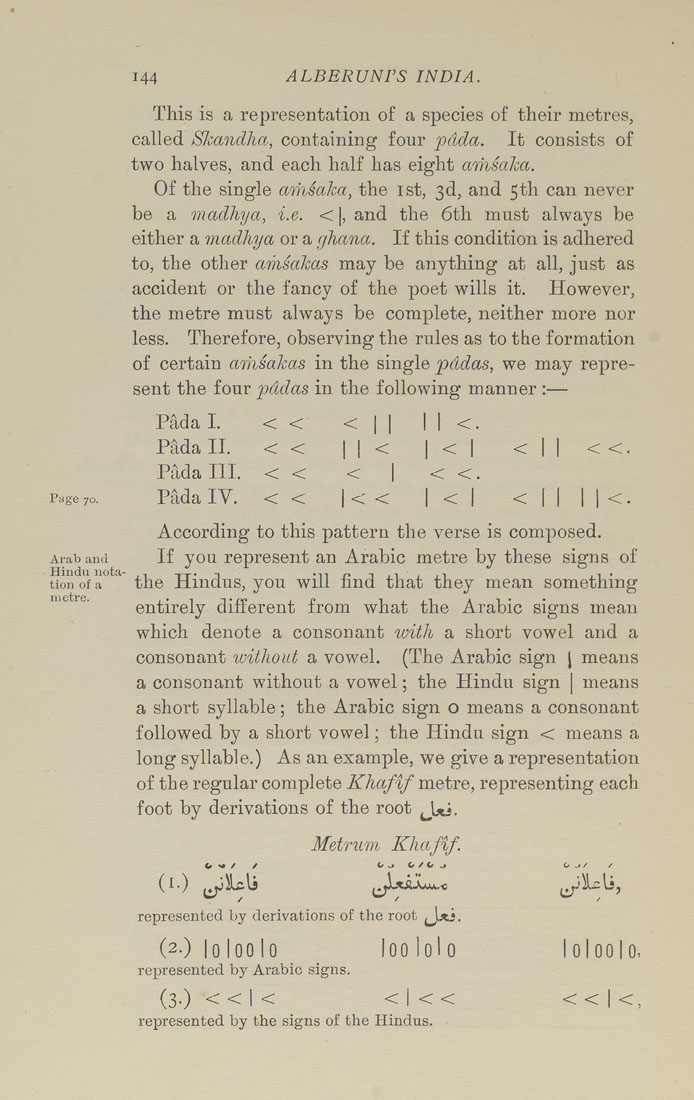Bīrūnī, Muḥammad ibn Aḥmad, Alberuni's India (v. 1)
(London : Kegan Paul, Trench, Trübner & Co., 1910.)
|
||
|
|
|
|
| Page 144 |

144 ALBERUNPS INDIA. This is a representation of a species of their metres, called Skandha, containing four pdda. It consists of two halves, and each half has eight amsaka. Of the single amsaka, the ist, 3d, and 5th can never be a madhya, i.e. < |, and the 6th must always be either a madhya or a ghana. If this condition is adhered to, the other amsalcas may be anything at all, just as accident or the fancy of the poet wills it. However, the metre must always be complete, neither more nor less. Therefore, observing the rules as to the formation of certain amsakas in the single pddas, we may repre¬ sent the ionr pddas in the following manner :— Padal. < < < I I I I <. Pada II. < < I I < I < I < I 1 < <. Pada HI. < < < | < <. p«ge 70. Pada IV. < < I < < I < I < M 1 I <. According to this pattern the verse is composed, Arab and If you represent an Arabic metre by these signs of tion of a the Hiudus, you will find that they mean something entirely different from what the Arabic signs mean which denote a consonant with a short vowel and a consonant without a vowel. (The Arabic sign \ means a consonant without a vowel; the Hindu sign | means a short syllable; the Arabic sign o means a consonant followed by a short vowel; the Hindu sign < means a long syllable.) As an example, we give a representation of the regular complete Khafif metre, representing each foot by derivations of the root ^Ui. Metrum Khafif. (l-) ^^L:lj ,^UaJuu.« ^i^li, represented by derivations of the root ^Jjtj. (2-) loloolo loo lolo loloolo, represented by Arabic signs. (3.) <<!< <l<< <<l<, represented by the signs of the Hindus. Ill etre. |
| Page 144 |







